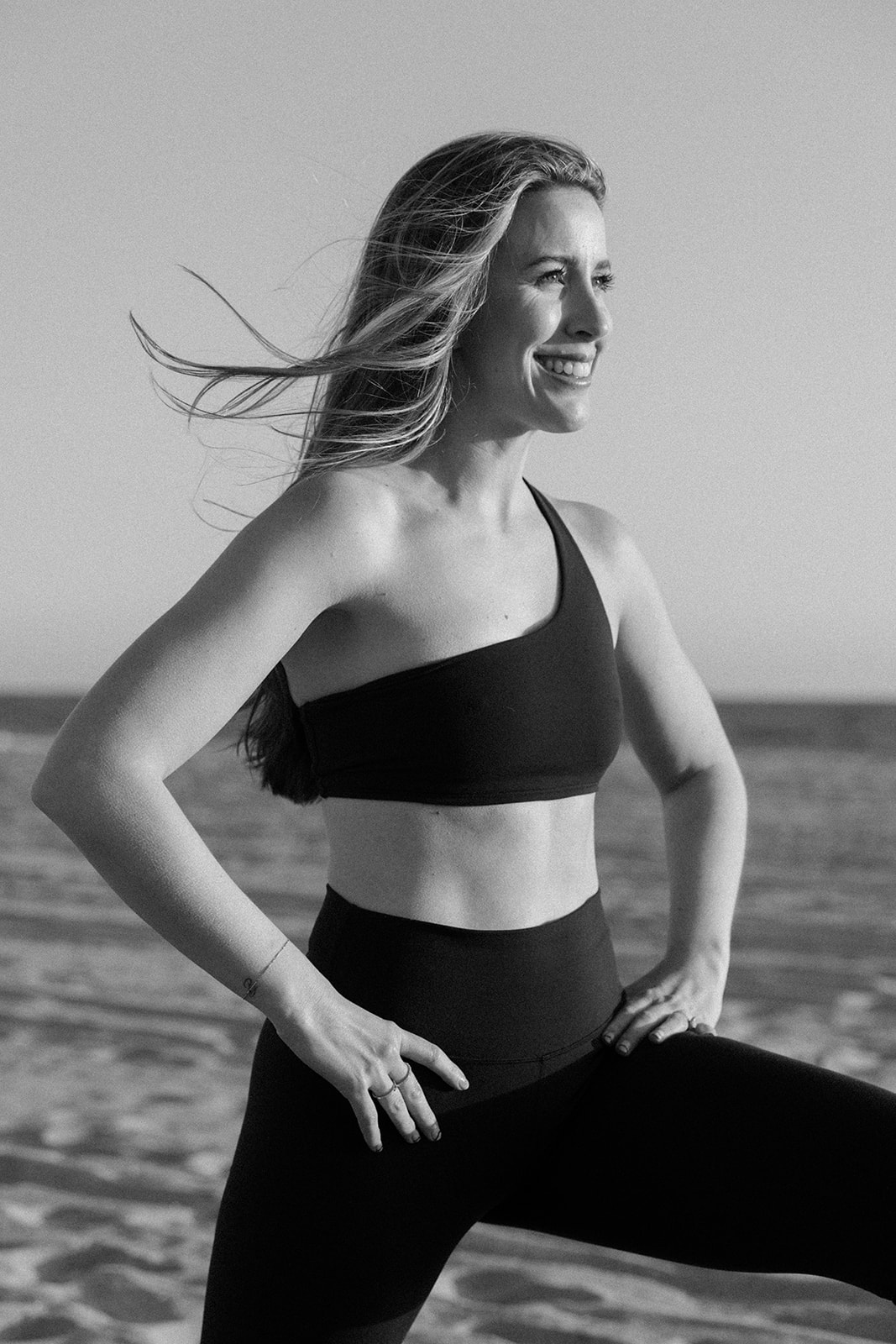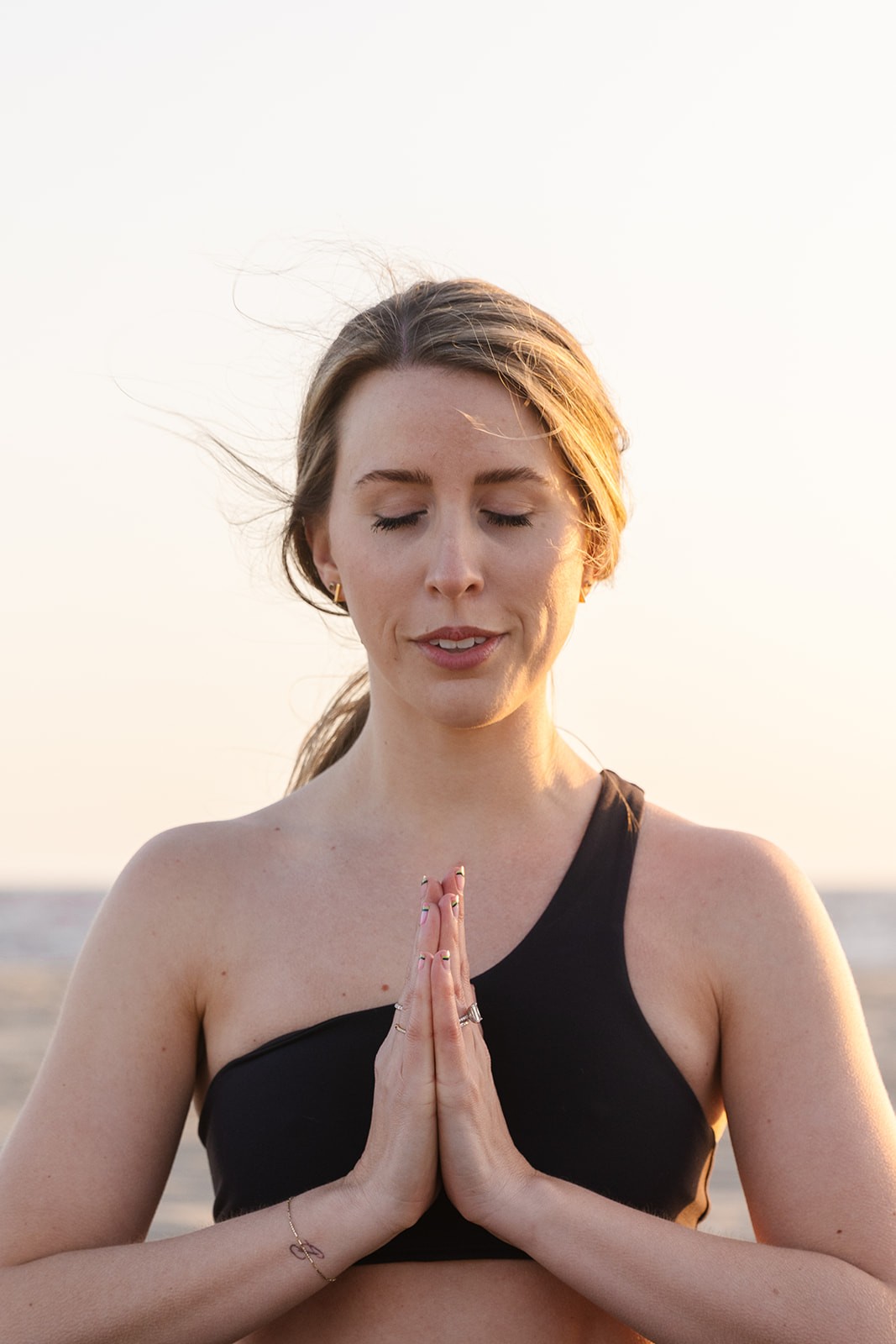Types of exercise
Recovery
Fitness myths
Evlo Programs
BODY COMPOSITION
All
Browse by category
Browse by category
Meditation: Effects on cortisol, pain, and more
By Dr. Payton Busker, PT, DPT
Ah, meditation. We all know we “should” do it, but I would venture to say that many of us don’t know how to easily incorporate it into our routines. At least that’s the boat I was in just 5 years ago!!
Picture me in physical therapy school: I was learning an incredible amount of information in a relatively short amount of time (3 years flies by when you’re cramming information in your brain!!). I bopped around to different fitness studios with my best friends/classmates, incorporating Yoga about once a week.
Although there was so much good happening, I felt lost.
This came to a head during my final 12-week clinical just before graduating. I found myself back in Austin, Texas (my college town). I almost immediately took myself to my favorite Yoga studio here that I called home in college. More than the physical practice of Yoga, this is when and where my consistent meditation practice truly began.
My goal of this post is to save you the trouble/years of bopping around and provide very tangible ways to integrate meditation into your daily or weekly routine!
Spoiler: you might already be doing it.
Let’s dive into the benefits of meditation first!
Psychological Benefits of Meditation
Studies show numerous psychological benefits to meditation including decreased stress levels and anxiety as well as improved mood. Those with a regular meditation practice demonstrate improved tolerance to stressful stimuli. Meaning, it may take more of said stressful stimulus to tip over your stress bucket. As we know all too well, we cannot control other people/things/situations. So learning about this ability to improve my own resiliency and tolerance towards the uncontrollable made me feel very optimistic!!
Physiological Benefits of Meditation
Meditation and its effect on cortisol levels:
Regular meditation/intentional breathwork are known to decrease cortisol levels in the body. Cortisol is a stress hormone that, when left unchecked, can play a significant role in lingering inflammation in the body as well as higher levels of oxidative stress.
Oxidative stress is a build up of reactive oxygen species (ROS) and may show up as:
- Fatigue
- Memory loss or brain fog
- Muscle and/or joint pain
- Wrinkles
- Gray hair
- Decreased eyesight
- Headache
- Sensitivity to noise
Shannon did an awesome breakdown on Fit Body, Happy Joints explaining how increased cortisol levels inhibit important antioxidant production that could prevent this excessive ROS build up. Take a listen here for more info!
Decreased perception of pain is a benefit that toggles between physiological and psychological.
We as humans have the unique ability to not only experience pain from a stimulus itself (i.e. stubbing your toe), but to also experience higher levels of pain because of the thoughts that occur directly AFTER the actual stimulus (i.e. “Holy sh*t, I just stubbed my toe, that hurt SO BAD, iedeugdyg”). These after thoughts are shown to actually increase our perception of the pain itself!! Luckily, research shows that regular meditation plays a significant role in decreasing this secondary pain response!
Miscellaneous (but important!!) benefit alert: Increased workplace satisfaction.
We are in the height of the #greatresignation and I myself have made a workplace move. I am all for the “if you don’t like your job, make a change” movement, but I also love workshopping ways to make us more satisfied in our current situation that may be even easier than putting in your two weeks.
Enter (you guessed it) meditation!!
Two studies specifically highlighted the role of mindfulness on workplace satisfaction. These studies found that mindfulness played a significant role in workplace satisfaction, especially in “emotionally demanding jobs”. They suggest that mindfulness helped to prevent burnout from emotional exhaustion. Coming from a traditional role in healthcare, this really stuck out to me.
Burnout and emotional exhaustion are not isolated to healthcare.
So many people, especially in our “more is better” culture, are at their wits end. While meditation and mindfulness cannot necessarily fix systemic and cultural issues that may be at play, it can help to improve one’s physiological, psychological, and workplace well being.
“But I don’t have time to meditate”.
I feel this argument deeply. I was there (see:intro). My opinion about the best, most tangible way to start a mediation practice has shifted significantly because of this.
Start small. Like really small.
One of my favorite parts about Evlo is that we begin and end each class with intentional breathwork.
If you have been taking classes regularly (and not skipping the warm ups and cool downs!!) you have already begun your regular meditation practice!! Best news ever.
I think we get ourselves into trouble and fall prey to the “I don’t have time” argument when we try to make our meditation practice more complicated than it needs to be.
Meditation can be defined as “…a family of techniques which have in common a conscious attempt to focus attention in a non-analytical way and an attempt not to dwell on discursive, ruminating thought” (Shapiro, 1980).
Meditation is not defined as “going to a fancy meditation studio, buying the expensive pillow to sit on, and chanting for hours on end”.
Meditation can be synonymous with 2-3 intentional deep breaths. And it also can be defined as the above scenario. But which sounds more sustainable for your schedule?
If you’ve begun to crave more of the meditative elements (which tends to happen!!) after a few months of Evlo, you may be ready to take the next step in your practice. Read on!
Integrating guided meditations.
We have an ever-growing library of meditations within the Evlo membership. These meditations are meant to help support the deeper practice you may be craving. You will find that most of these meditation are less than 10 minutes as a way to maintain sustainability with regular use!
My recommendation is to begin utilizing these guided meditations 1-3 times per week. With meditation, I would rather your initial goal be smaller and more attainable than aiming to complete a guided meditation 5-7 times per week. I’d rather you achieve your goal of 1-3 times per week as opposed to feeling overwhelmed by the ask of 5-7 times per week!
Start small. Then expand!
I highly recommend exploring the meditation category and finding specific topics or themes that resonate with you. You will find meditations like “loving kindness”, “focus”, “stillness”, “visualization”, etc. There are nighttime-specific meditations that can be added to your routine just before falling asleep. Pick one that sticks out on a particular day and give it a shot!
There are also a handful of “breathwork” specific meditations. This may be a great place to start if you find the themes to be distracting or difficult. These meditations will focus on intentional breathing and will serve as an expansion of the included breathwork within the Evlo classes.
Difficulty with the stillness element of meditation? Check out our walking meditation and learn how to easily incorporate meditation into your daily walks.
Enjoy the benefits.
Ultimately, if you find that your idea of what a meditation practice should be is causing you stress because “you’re not doing it right”, it’s time to re-evaluate!!
Meditation should add to your life, not detract.
Start with a few intentional breaths a day. Maybe begin taking those breaths with your eyes closed down. Or add multiple rounds of 2-3 breaths per day. Maybe become more aware of your steps as you take your daily walk. Or begin dabbling with short, guided meditations.
Wherever you are in your practice is exactly where you are supposed to be.
No stress.
References:
Perceived stress/negative mood: http://encognitive.com/files/BRIEF%20MEDITATION%20TRAINING%20CAN%20IMPROVE%20PERCEIVED%20STRESS%20AND%20NEGATIVE%20MOOD_0.pdf
Effects of diaphragmatic breathing on oxidative stress: https://www.hindawi.com/journals/ecam/2011/932430/
FBHJ on Oxidative Stress: https://podcasts.apple.com/us/podcast/54-how-to-reduce-oxidative-stress-to-slow-aging-improve/id1561242280?i=1000555784221
Mindfulness in the work place: https://www.habitualroots.com/uploads/1/2/1/3/121341739/mindfulnessatwork.pdf
Shapiro, D. H. (1980). Meditation: Self-regulation strategy and altered state of consciousness. New York, NY: Aldine.


